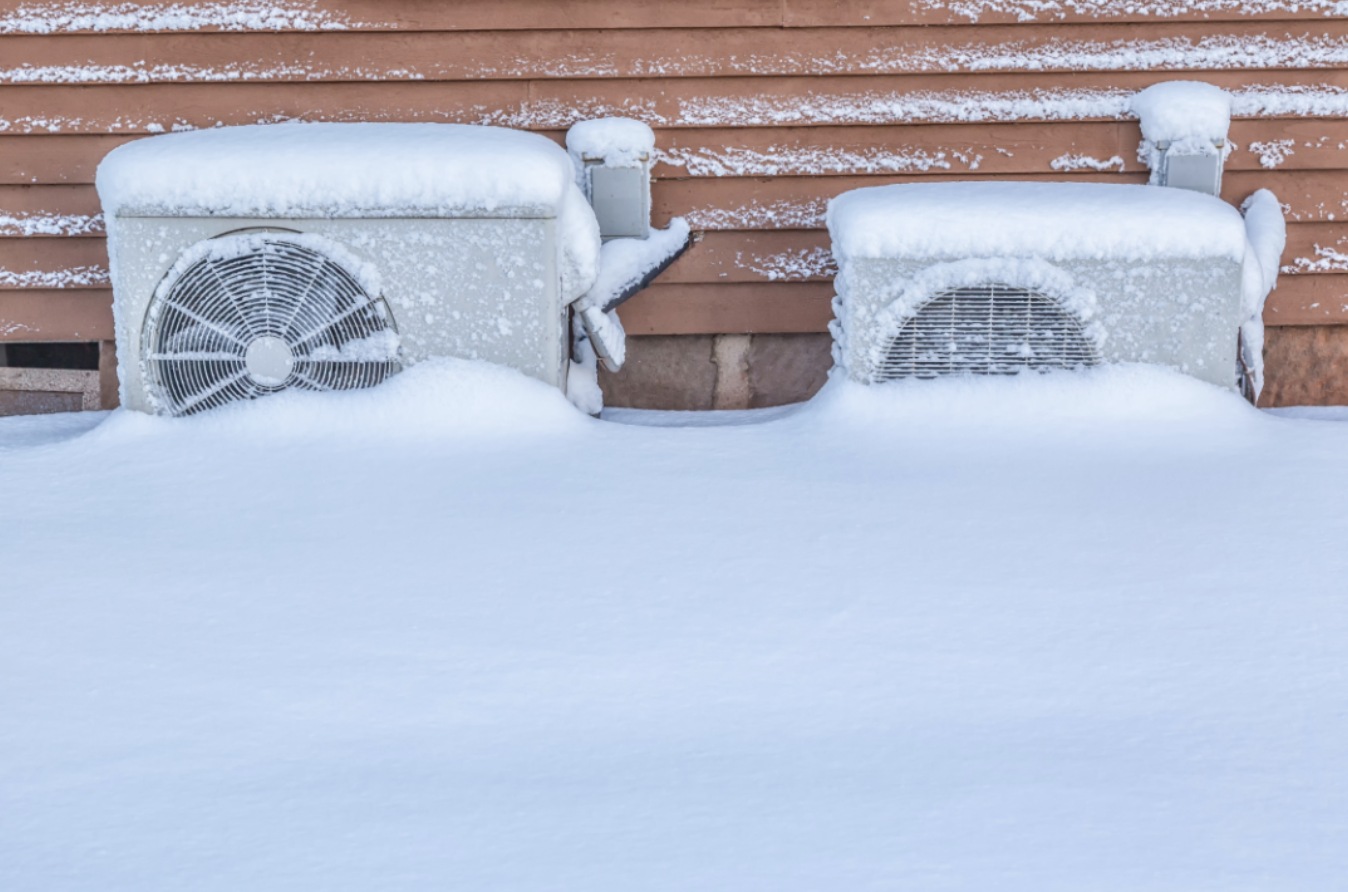Winter is the season of cozy nights and warm blankets, but it can also be the season for frozen heat pumps. While a light dusting of frost on your heat pump’s coils is perfectly normal, a complete ice-up can spell trouble.
So, the question arises: can heat pumps freeze up? The answer is a resounding yes, but understanding why and what to do about it can keep your home warm and your wallet happy.
How Can Heat Pumps Freeze Up?
Heat pumps work by absorbing heat from the outside air and transferring it to your home. However, when temperatures drop quickly, moisture in the air condenses and forms ice on the outdoor coil. This ice buildup acts like a blanket, preventing the heat pump from absorbing heat efficiently and leading to a frozen heat pump.
Normal vs. Abnormal Ice Buildup:
A thin layer of frost on the coils is nothing to worry about. Your heat pump has a built-in defrost cycle that automatically kicks in to melt the ice. This cycle usually happens every few minutes and is barely noticeable.
However, if your heat pump is completely encased in ice, including the top and even the inside of the coils, it’s time to take action. This excessive ice buildup indicates a potential problem that needs to be addressed quickly to avoid damage and energy waste.
Troubleshooting Frozen Heat Pumps:
- Observe the defrost cycle: Give your heat pump 30 minutes. If the ice melts away during the defrost cycle, your system is likely working normally.
- Check the air filter: A clogged or dirty air filter can restrict airflow and contribute to ice buildup. Replace it if necessary.
- Clear debris: Remove leaves, snow, and other debris around the outdoor unit to ensure proper airflow.
- Inspect the top of the unit: If ice builds up on top, turn off the heat pump and carefully remove the ice with a garden hose. Never use sharp objects!
- Seek professional help: If the ice persists or you suspect a deeper issue and will need an HVAC technician.
When to call an HVAC technician:
- Bad defrost control, timer, thermostat, sensor, or relay: These are delicate internal components best left to the trained hands of a qualified HVAC technician.
- Sticking reversing valve or bad solenoid coil: These intricate parts require professional expertise for proper repair or replacement.
- Bad outdoor fan motor: Replacing this motor involves electrical work and safety precautions, making it a pro job.
- Low refrigerant charge or restriction: Messing with refrigerant levels is a no-go for homeowners due to safety and environmental regulations.
When to DIY your frozen heat pump:
- Outdoor coil blocked: Check for leaves, snow, or other debris obstructing airflow. Carefully clear the coil with a soft brush or broom.
- Unit sunk in ground: Shovel snow and debris away from the base to ensure proper drainage and airflow.
- Leaking gutter: Fix the gutter to prevent water from dripping onto the unit.
- Freezing rain: This can be tricky, but try gently removing ice from the top of the unit with a soft brush and warm water (never use hot water!).
Preventative Measures:
- Schedule regular maintenance: A yearly checkup by a professional can identify potential problems and prevent ice buildup before it happens.
- Keep the area clear: Regularly remove leaves, snow, and debris from around the outdoor unit.
- Address leaky gutters: Make sure gutters aren’t dripping water onto the heat pump.
Remember:
While light frost is normal, complete ice coverage is not. Be sure not to panic and address the issue quickly to avoid damage and energy waste. If you’re ever unsure, consult a qualified HVAC technician. At Oxbow, we’re available 24/7 to keep your home comfortable during freezing winters.
Conclusion:
By understanding the reasons behind a frozen heat pump and taking appropriate action, you can keep your home warm and your winter worry free. So, stay cozy and enjoy the season, knowing that even if your heat pump experiences a freeze, you’re equipped to handle it.



